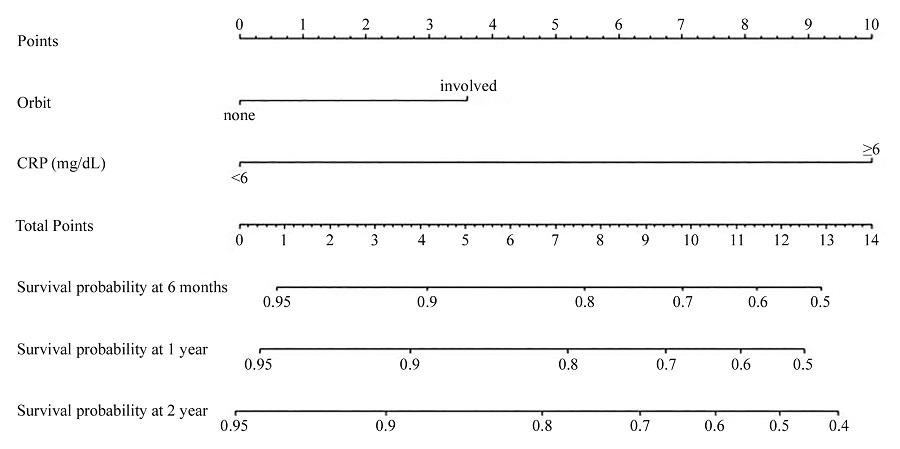Abstract
Background: The article discusses acute invasive fungal rhinosinusitis (AIFR), a life-threatening disease that progresses rapidly despite appropriate treatment. The article aims to analyze the factors that impact overall survival (OS) and disease-specific survival (DSS) separately and develop a scoring system based on significant factors to facilitate counseling on prognosis and planning an appropriate treatment plan.
Methods: We enrolled 120 patients with pathologically proven AIFR through reviewing data from the past 15 years at two tertiary referral hospitals. Disease-specific survival (DSS) and overall survival (OS) were calculated, and a statistically meaningful scoring system was developed.
Results: The DSS rate of AIFR was 77.5% (93/120 cases), and the OS rate was 40.8% (49/120 cases). Multivariate analysis for DSS identified fungal invasion in the orbit and CRP levels greater than 6 (mg/dL) as significant factors, while underlying hematologic malignancy, ANC levels less than 500 (/?L), and CRP levels greater than 6 (mg/dL) were associated with OS.
Conclusion: This study aimed to develop a nomogram to predict the prognosis of patients with AIFR using indicators such as orbit involvement and CRP levels above 6 mg/dL. The nomogram could assist medical professionals in evaluating a patient's condition, predicting prognosis, and devising a treatment plan based on the results.